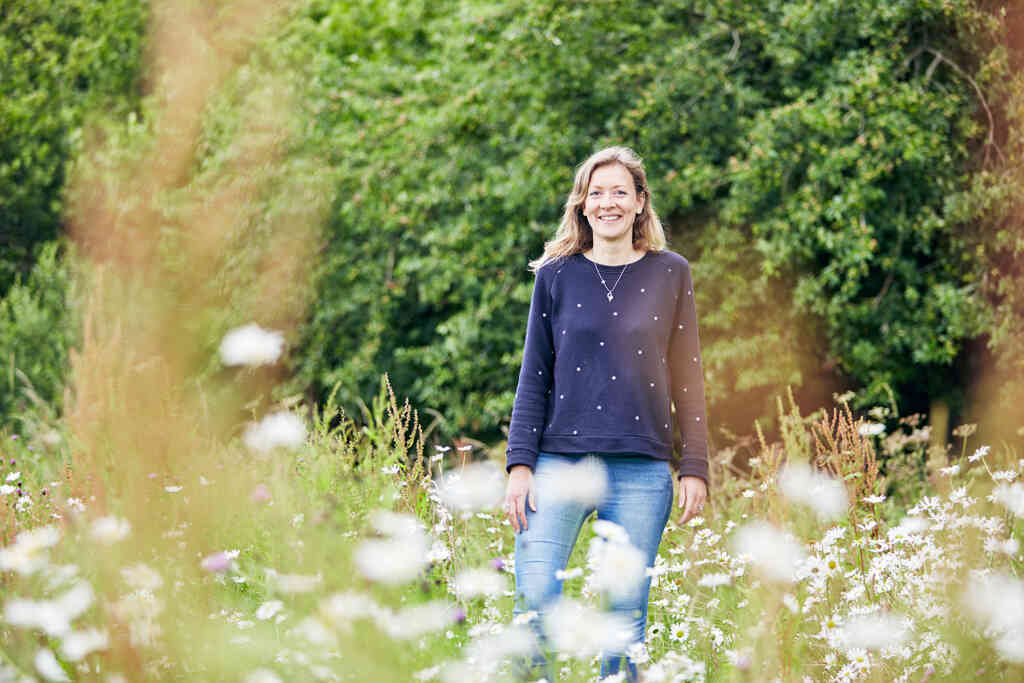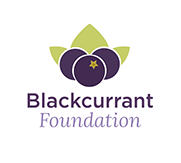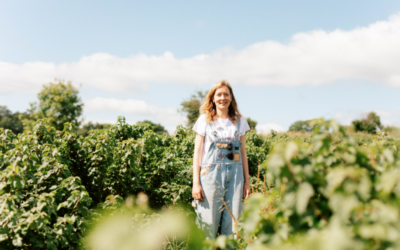Rosie’s Diary 2021: Part 2

This April, we were greeted with warmer temperatures, blue skies and unfortunately, some rather cold evenings. Despite this, I have been thrilled to see some of the tiny purple flowers opening up on my blackcurrant bushes, meaning that we are one step closer to the harvest in July! However, the warmer spring day temperatures meant that we have been keeping an eye on the soil moisture sensors to see if the fields look like they may need irrigating. So far, it hasn’t been required, and since then we’ve been grateful for some rain!
As a farmer, my focus is on the blackcurrants and the environment. To achieve the best quality crop, we must attract a host of pollinators, wildlife and insects. This is why I am so pleased to see the blackcurrant fields come alive with ladybirds, spiders, bees and hoverflies after such a long cold patch. Although, we have also been busy scouting each field for pests, including winter moth, which can devastate the crop. This has meant that we have spent many hours checking the plants for any damage.
The flowers on the bushes are now really vulnerable and we have got to hope that the wind stops blowing, otherwise the flowers can blow off the bush and this will be damaging to the crop! We have had it happen with Ben Gairn, and I don’t even want to look at the ground to see how many have fallen off.
Whilst walking around the farm, it has been lovely to see all of the nesting birds at this time of year. It’s great to see our feathered friends build their nests, raise their young and be protected from the elements. I am also looking forward to hearing the dawn chorus now we are into May. To hear the cacophony of beautiful birdsong, I’ll be getting up at sunrise, but trust me when I say it is really worth it! We are looking forward to welcoming the sheep back for this year’s grazing – I just love seeing animals on the farm!
I have also been busy prepping our land this month for the Higher Tier Countryside Stewardship Scheme, as some blackcurrant mixes need to be sown in May. For those of you who don’t know, this scheme prioritises the blackcurrants, the environment and wildlife conservation so that we can have a wildlife haven on Gorgate Farm!
Thanks for following my journey – I’ll be sharing more updates from the blackcurrant fields soon!
Tune in for more updates on our social channels:
YOU MAY ALSO WANT TO READ
How to Celebrate Easter with Blackcurrants
Easter, and all the fun that comes with it, is just around the corner - think spring chicks, egg hunts, fields full of bouncy lambs, daffodils and, of course, fabulous feasts cooked on the barbecue whether the sun is shining or not! From delicious seasonal bakes to...
A Year As A Blackcurrant Grower
Looking to grow your own blackcurrants? If so, we’ve broken your blackcurrant-growing journey down into three simple steps and shared our top tips to see you from one start of the year to another… Planting Blackcurrant plants are typically sold as two-year-old bushes,...
A Year in Blackcurrant Recipes
YOU MAY ALSO WANT TO READ Every day’s a great day to enjoy blackcurrants, but we know the kind of dishes that will really hit the spot are those that tie into the seasons. From energy kicks to sweet treats, we’ve rounded up 12 of our blackcurrant recipes to...




